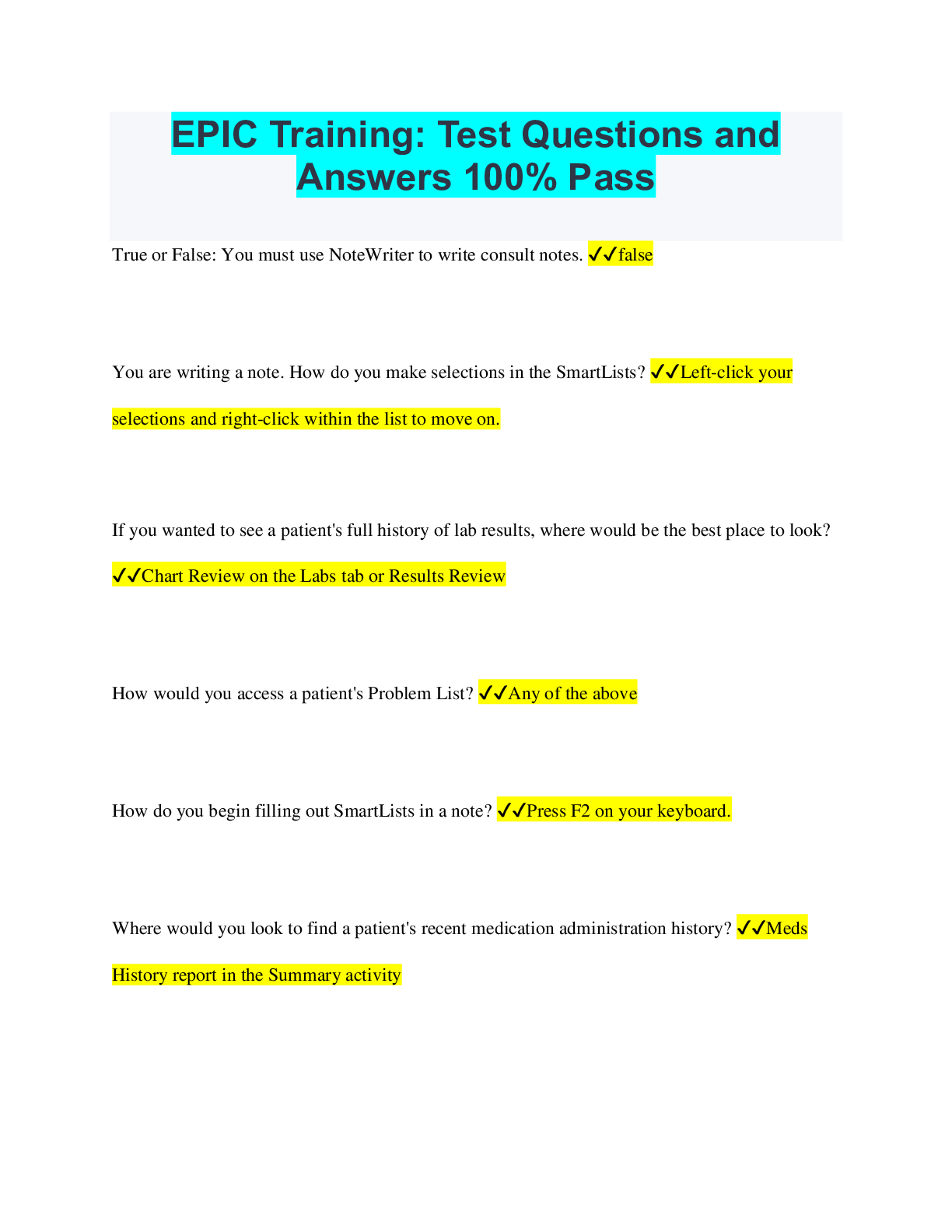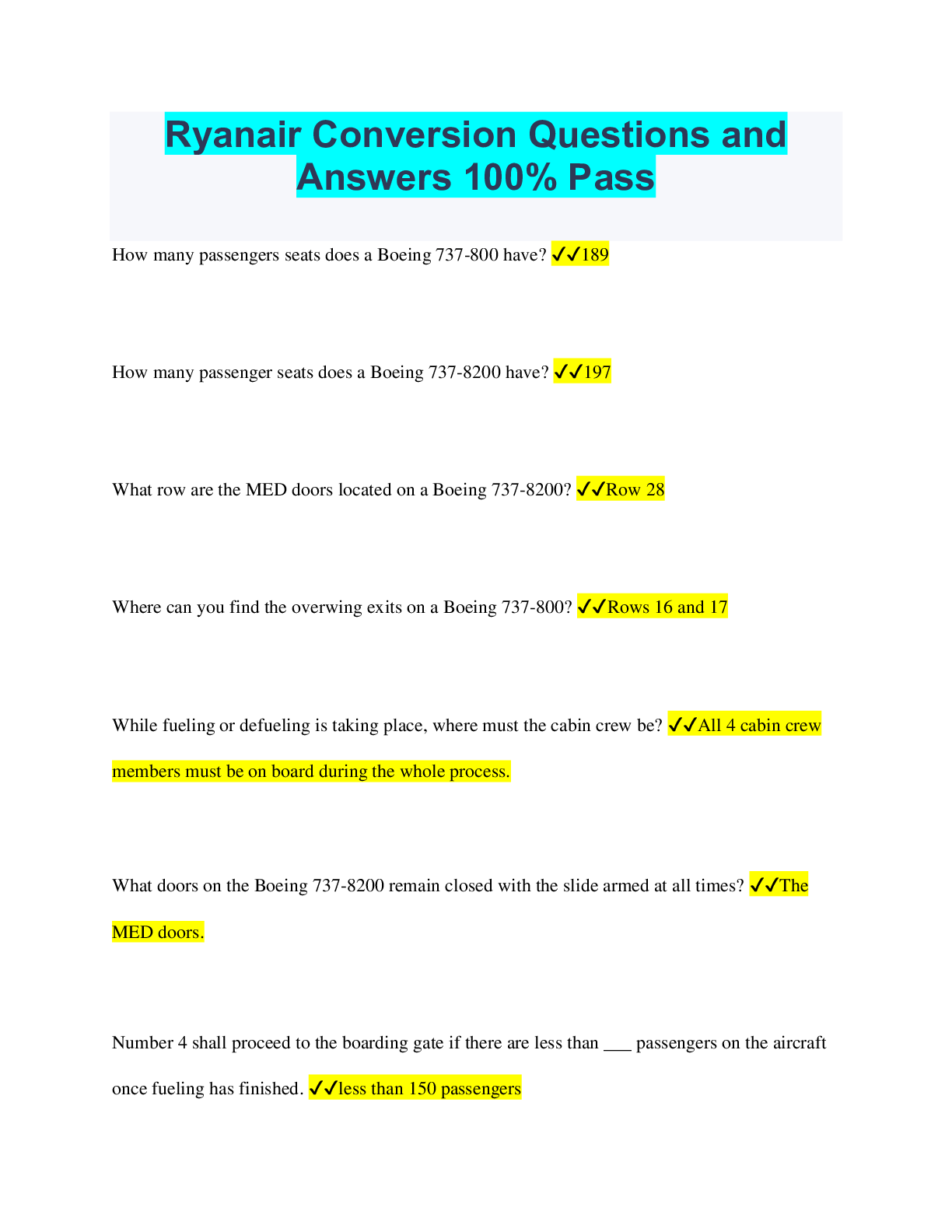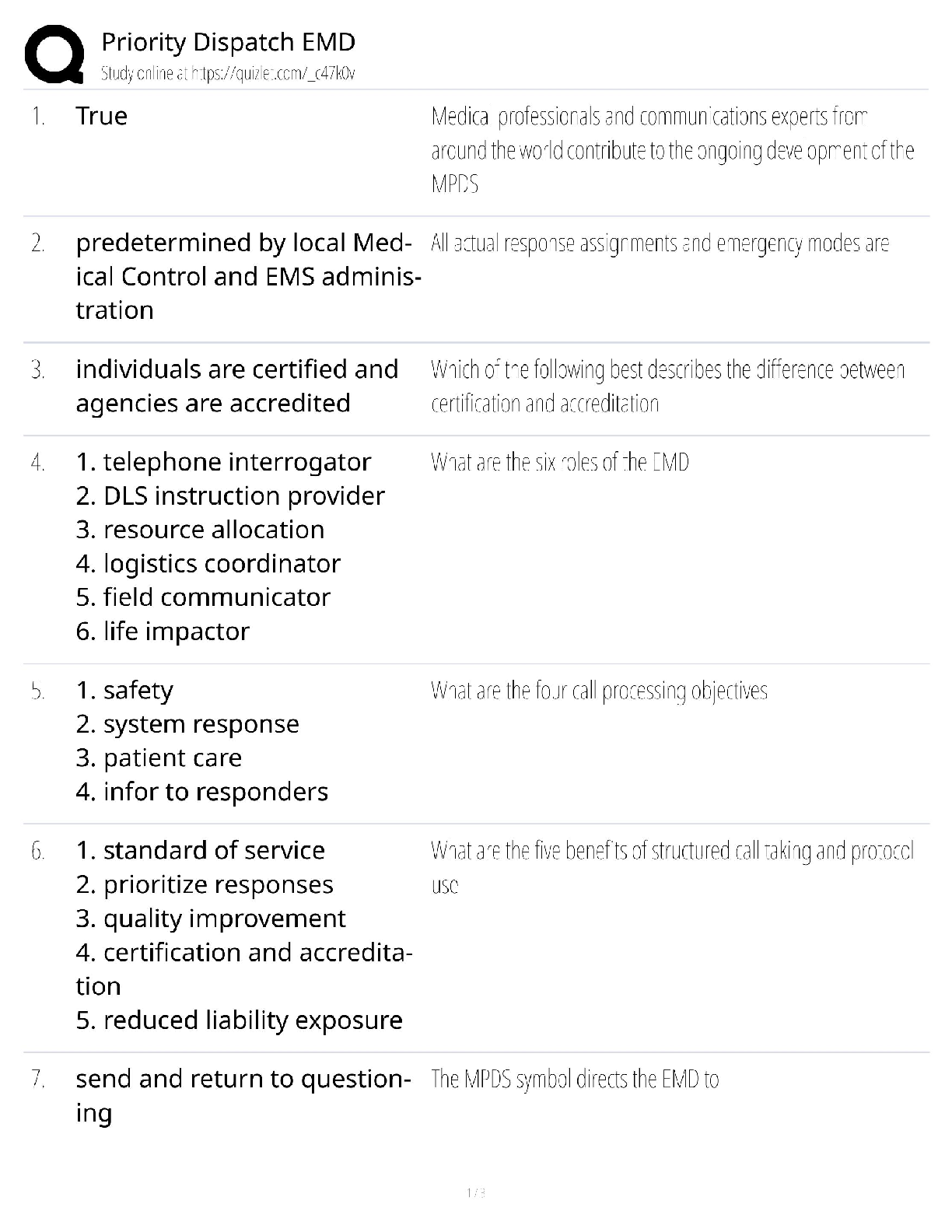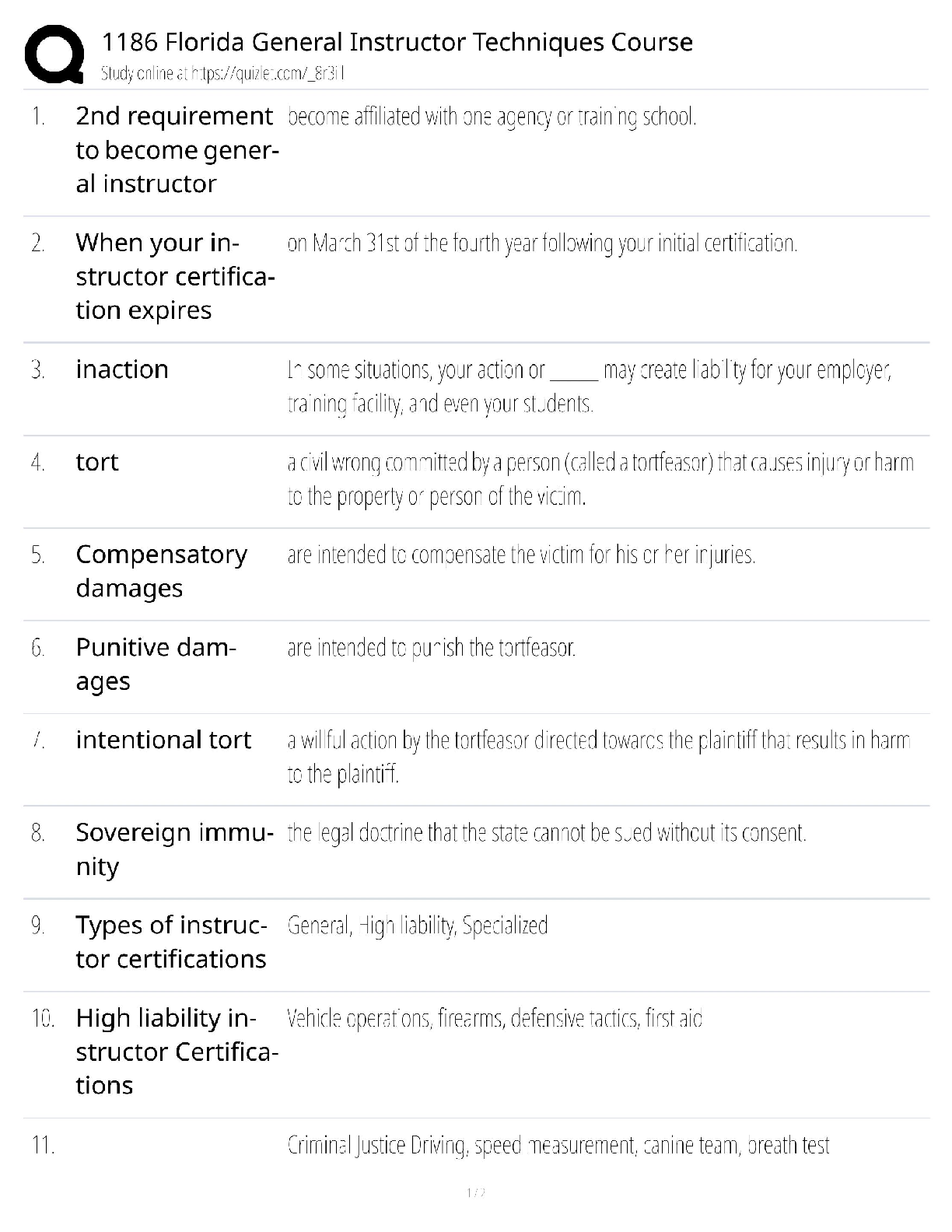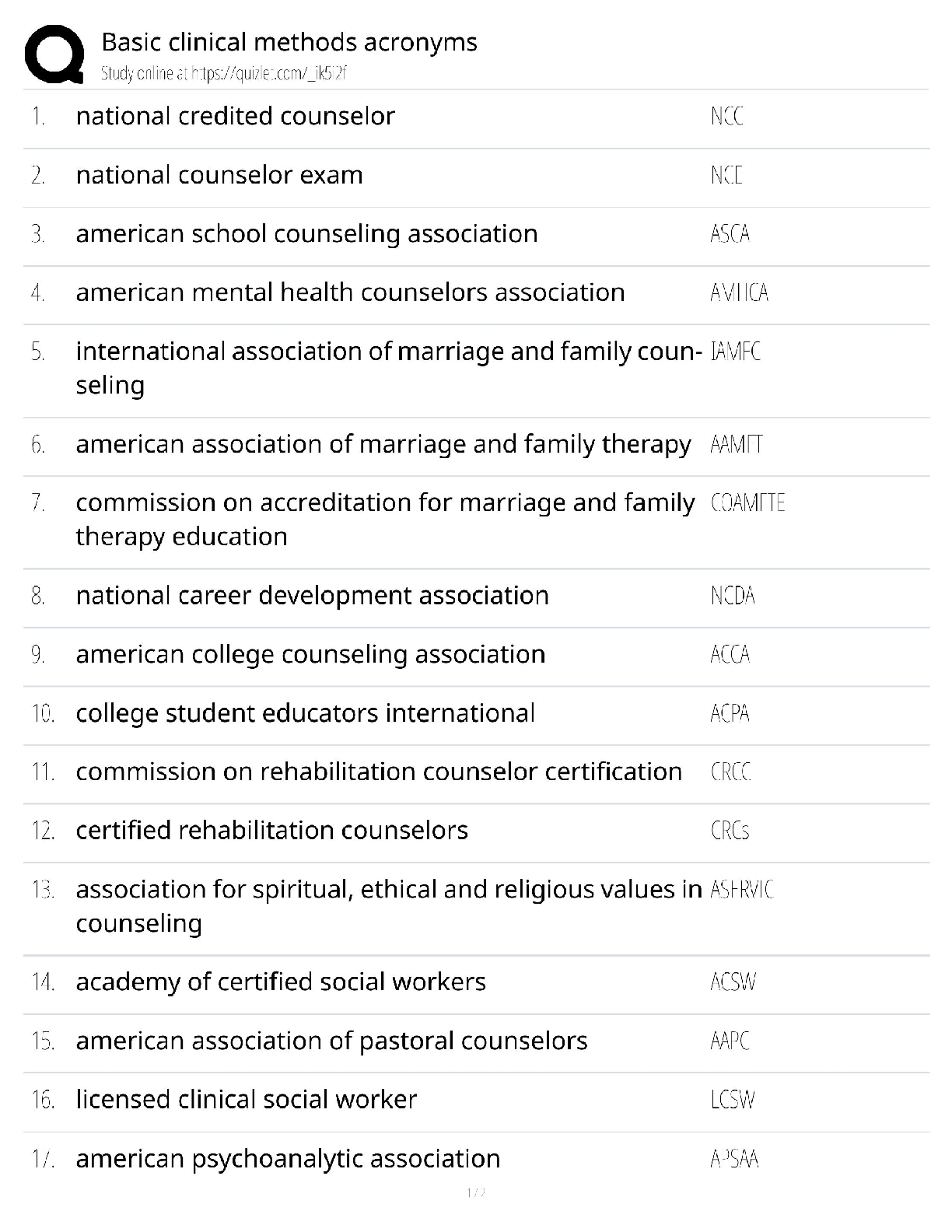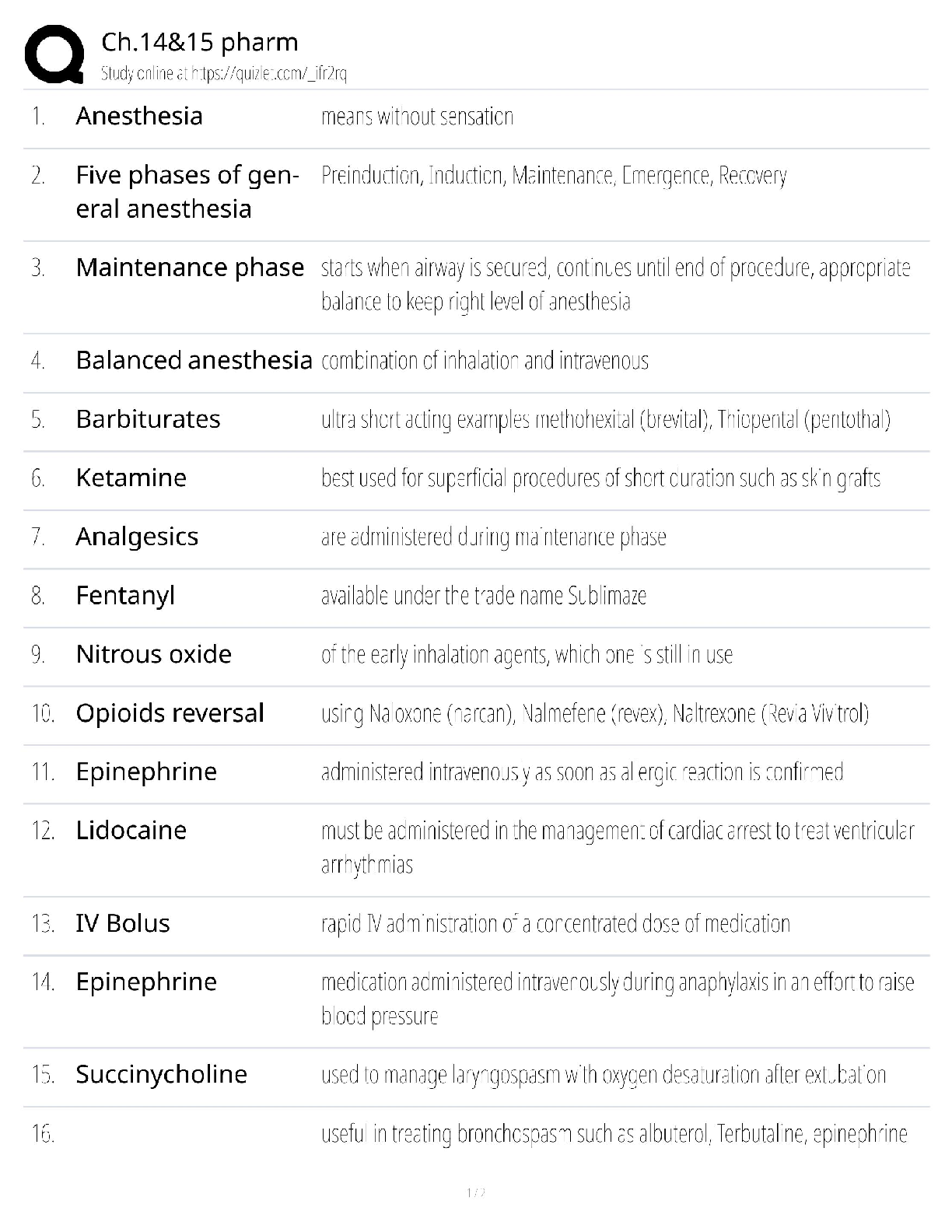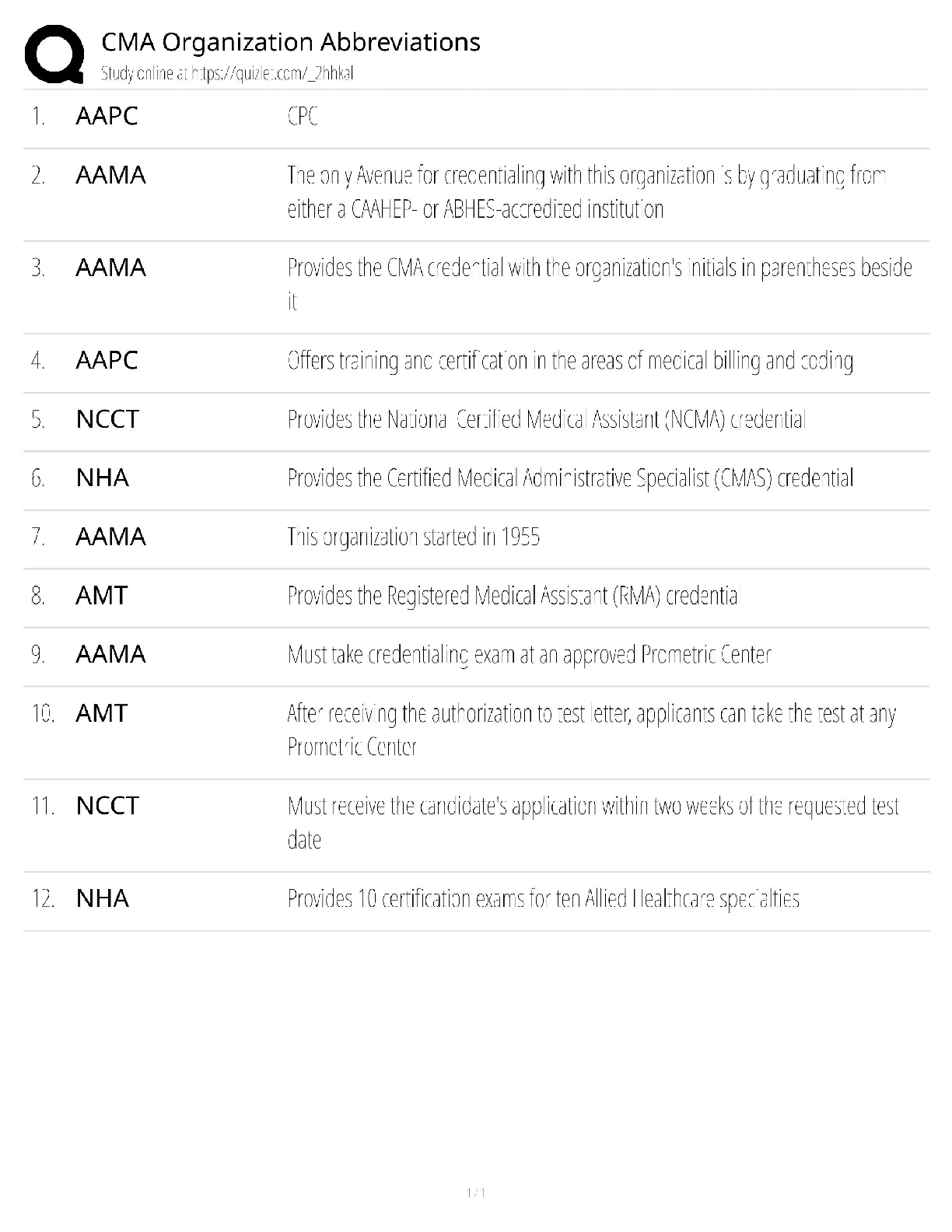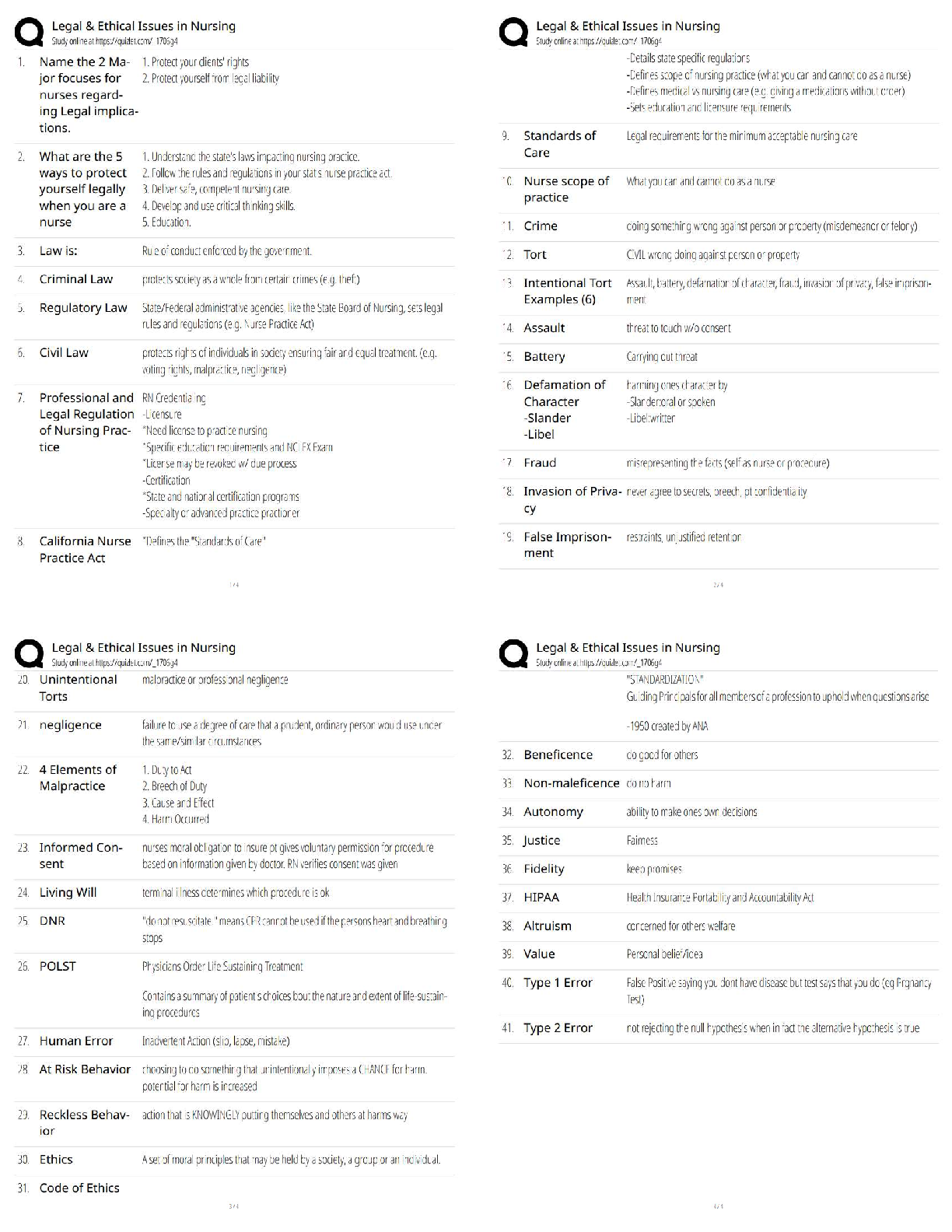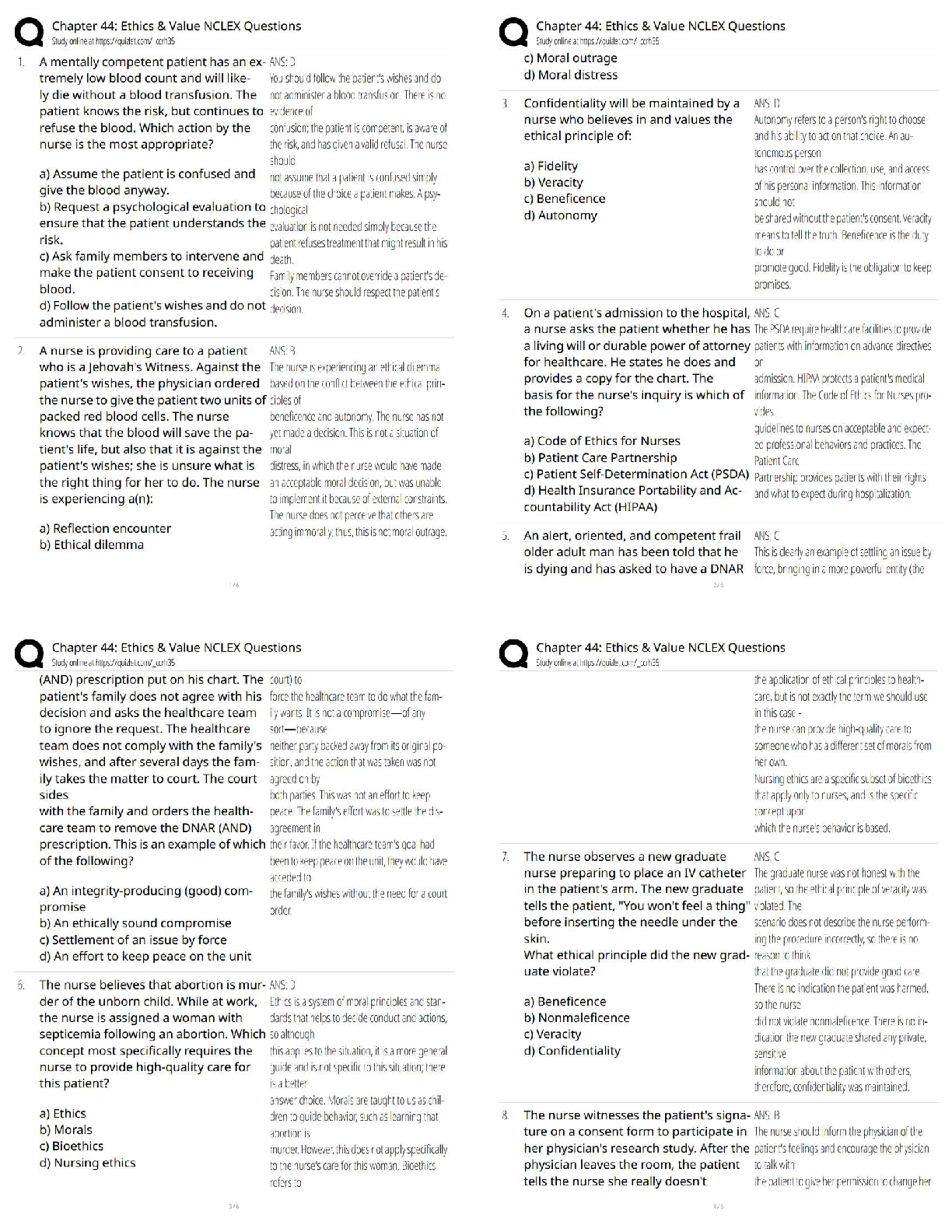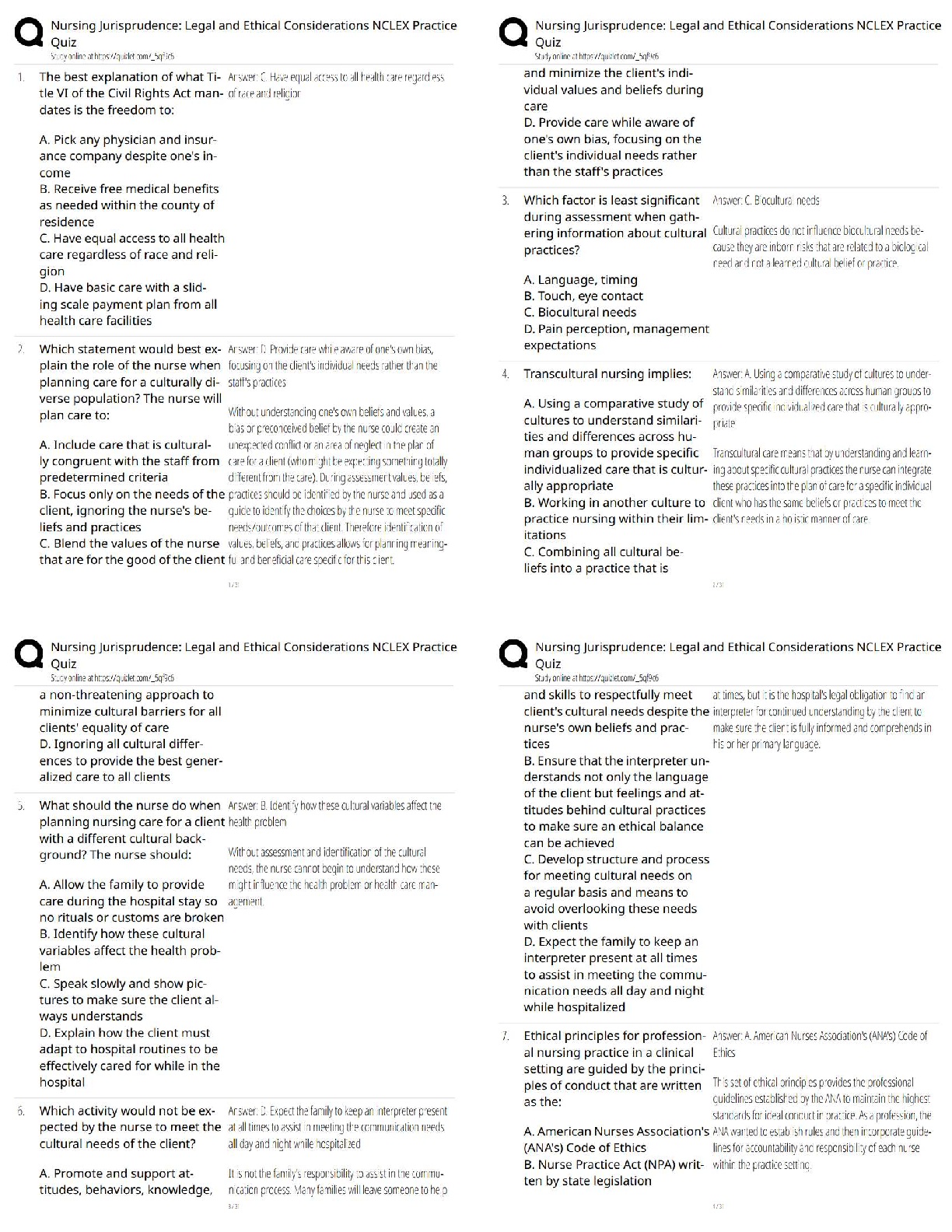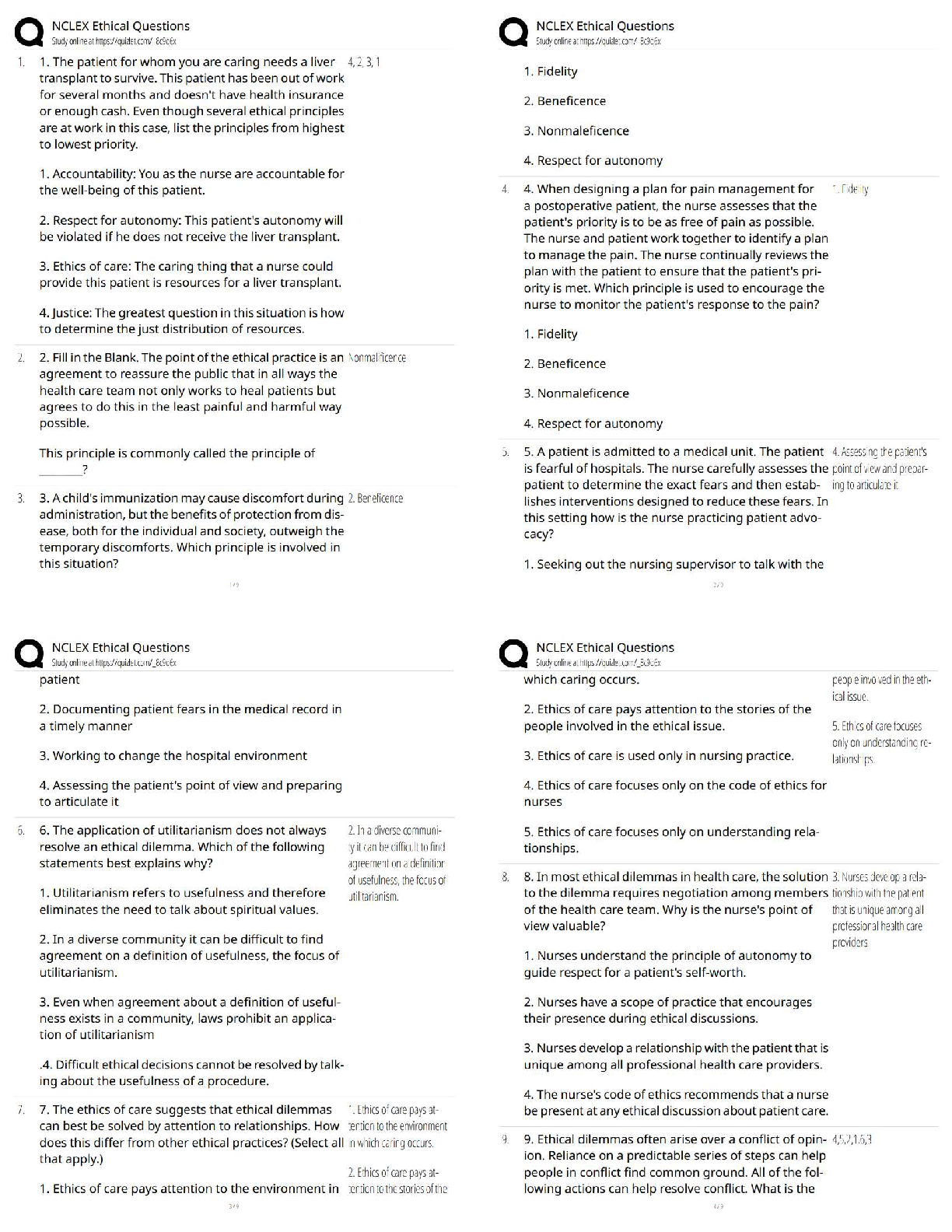*NURSING > QUESTIONS & ANSWERS > TNCC 8th Edition Questions and Answers(2022 edition) (All)
TNCC 8th Edition Questions and Answers(2022 edition)
Document Content and Description Below
TNCC 8th Edition Questions and Answers (2022 edition) What are the greatest risks for transport? Correct Answer-Loss of airway patency, displaced obstructive tubes lines or catheters, dislodge sp ... linting devices, need to replace or reinforce dressings, deterioration in patient status change in vital signs or level of consciousness, injury to the patient and/or team members According to newtons law which of these two force is greater: size or force? Correct Answer-Neither. For each force there is an equal and opposite reaction. What is the relationship between mass and velocity to kinetic energy? Correct Answer-Kinetic energy is equal to 1/2 the mass multiplied the square of its velocity therefore when mass is doubled so is the net energy, however, when velocity is doubled energy is quadrupled. What is tension? Correct Answer-stretching force by pulling at opposite ends What is compression? Correct Answer-Crushing by squeezing together What is bending? Correct Answer-Loading about an axis. Bending causes compression on the side the person is bending toward intention to the opposite side What is shearing? Correct Answer-Damage by tearing or bending by exerting faucet different parts in opposite directions at the same time. What is torsion? Correct Answer-Torsion forces twist ends in opposite directions. What is combined loading? Correct Answer-Any combination of tension compression torsion bending and/or shear. What are the four types of trauma related injuries? Correct Answer-Blunt, penetrating, thermal, or blast. What are contributing factors to injuries related to blunt traumas? Correct Answer-The point of impact on the patient's body, the type of surface that is hit, the tissues ability to resist (bone versus soft tissue, air-filled versus solid organs), and the trajectory of force. What are the seven patterns of pathway injuries related to motor vehicle accidents? Correct Answer-Up and over, down and under, lateral, rotational, rear, roll over, and ejection. Differentiate between the three impacts of motor vehicle impact sequence. Correct Answer-The first impact occurs when the vehicle collided with another object. The second impact occurs after the initial impact when the occupant continues to move in the original direction of travel until they collide with the interior of the vehicle or meet resistance. The third impact occurs when internal structures collide within the body cavity. What are the three factors that contribute to the damage caused by penetrating trauma's? Correct Answer-The point of impact, the velocity and speed of impact, and the proximity to the object. What causes the primary effects of blast traumas? Correct Answer-The direct blast effects. Types of injuries include last long, tympanic membrane rupture and middle ear damage, abdominal hemorrhage and perforation, global rupture, mild Trumatic brain injury. What causes the secondary effects of blast traumas? Correct Answer-Projectiles propelled by the explosion. Injuries include penetrating or blunt injuries or I penetration. What causes the tertiary effects of blast traumas? Correct Answer-Results from individuals being thrown by the blast wind. Injuries include hole or partial body translocation from being thrown against a hard service: blunt or penetrating trauma's, fractures, traumatic amputations. What causes quarternary effects of blast traumas? Correct Answer-All explosion related injuries, illnesses, or diseases not due to the first three mechanisms. Injuries include external and internal burns, crush injuries, closed and open brain injuries, asthmatic or breathing problems from dust smoke or toxic fumes, angina, or hyper glycemia and hypertension. What causes quinary effects of blasts traumas? Correct Answer-Those associated with exposure to hazardous materials from radioactive, biologic, or chemical components of a blast. Injuries include a variety of health effects depending on agent. What are the three processes that transfer oxygen from the air to the lungs and blood stream Correct Answer-Ventilation: the active mechanical movement of air into and out of the lungs; diffusion: the passive movement of gases from an area of higher concentration to an area of lower concentration; and perfusion: the movement of blood to and from the lungs as a delivery medium of oxygen to the entire body. When would you use a nasopharyngeal airway versus an oral pharyngeal airway? Correct Answer-Nasopharyngeal airways is contraindicated in patients with facial trauma or a suspected basilar skull fracture. Oral pharyngeal airways is used in unresponsive patients unable to maintain their airway, without a gag reflex as a temporary measure to facilitate ventilation with a bag mask device or spontaneous ventilation until the patient can be intubated. Describe the measurement of an NPA Correct Answer-Measure from the tip of the patient's nose to the tip of the patients earlobe. Measurement of an OPA Correct Answer-Place the proximal end or flange of the airway adjunct at the corner of the mouth to the tip of the mandibular angle. [Show More]
Last updated: 3 years ago
Preview 1 out of 7 pages

Buy this document to get the full access instantly
Instant Download Access after purchase
Buy NowInstant download
We Accept:

Also available in bundle (1)
Click Below to Access Bundle(s)

TNCC FULL SOLUTION PACK(ALL TNCC EXAMS AND STUDY QUESTIONS ARE HERE ,ALL ANSWERED CORRECTLY)
TNCC Final Exam Test 2022 Graded A+(Works 100%) TNCC final exam test 2022 open book TNCC 8th Edition Questions and Answers(2022 edition) TNCC test prepA, TNCC Notes for Written Exam, TNCC Notes for Wr...
By Nutmegs 3 years ago
$29
7
Reviews( 0 )
$8.00
Can't find what you want? Try our AI powered Search
Document information
Connected school, study & course
About the document
Uploaded On
May 11, 2022
Number of pages
7
Written in
All
Additional information
This document has been written for:
Uploaded
May 11, 2022
Downloads
0
Views
296





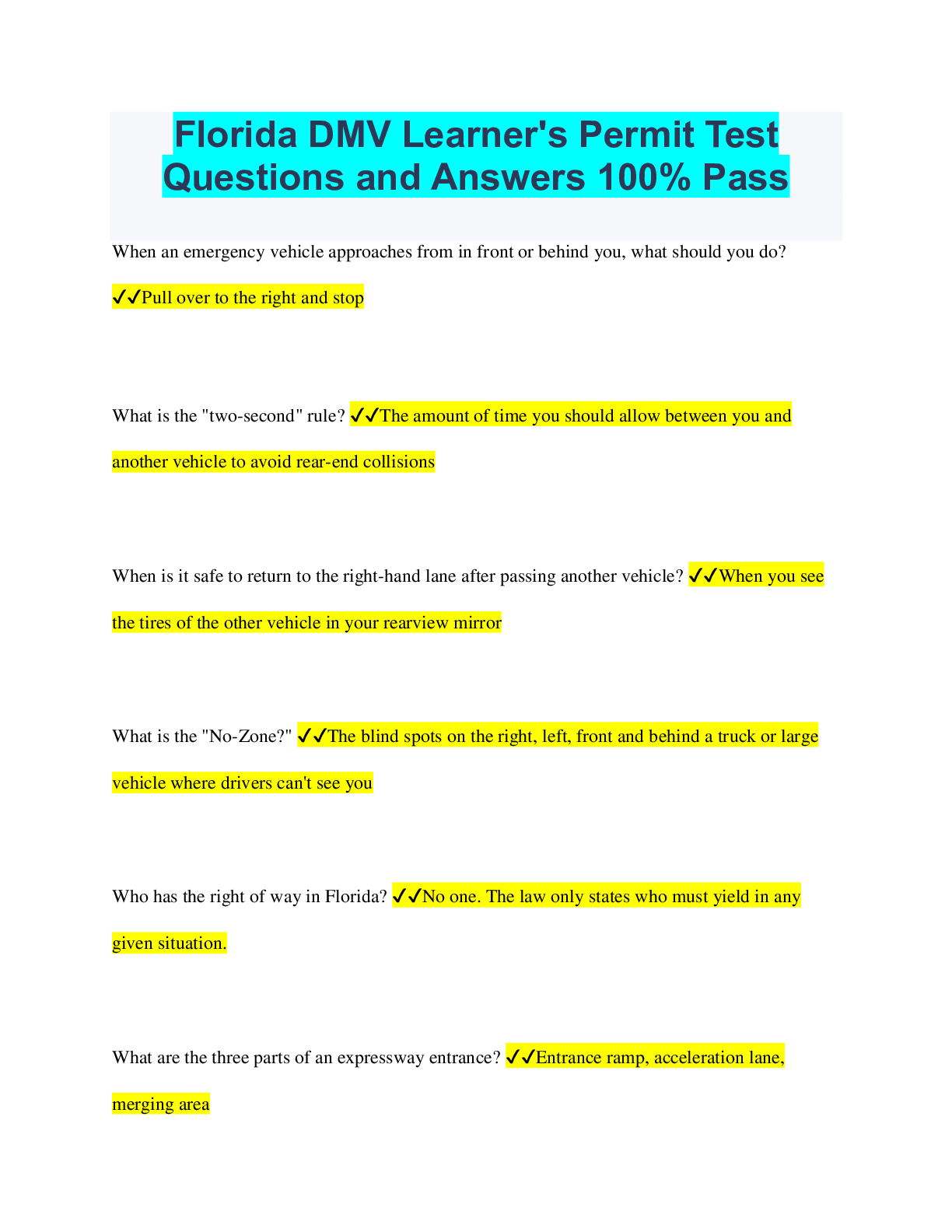
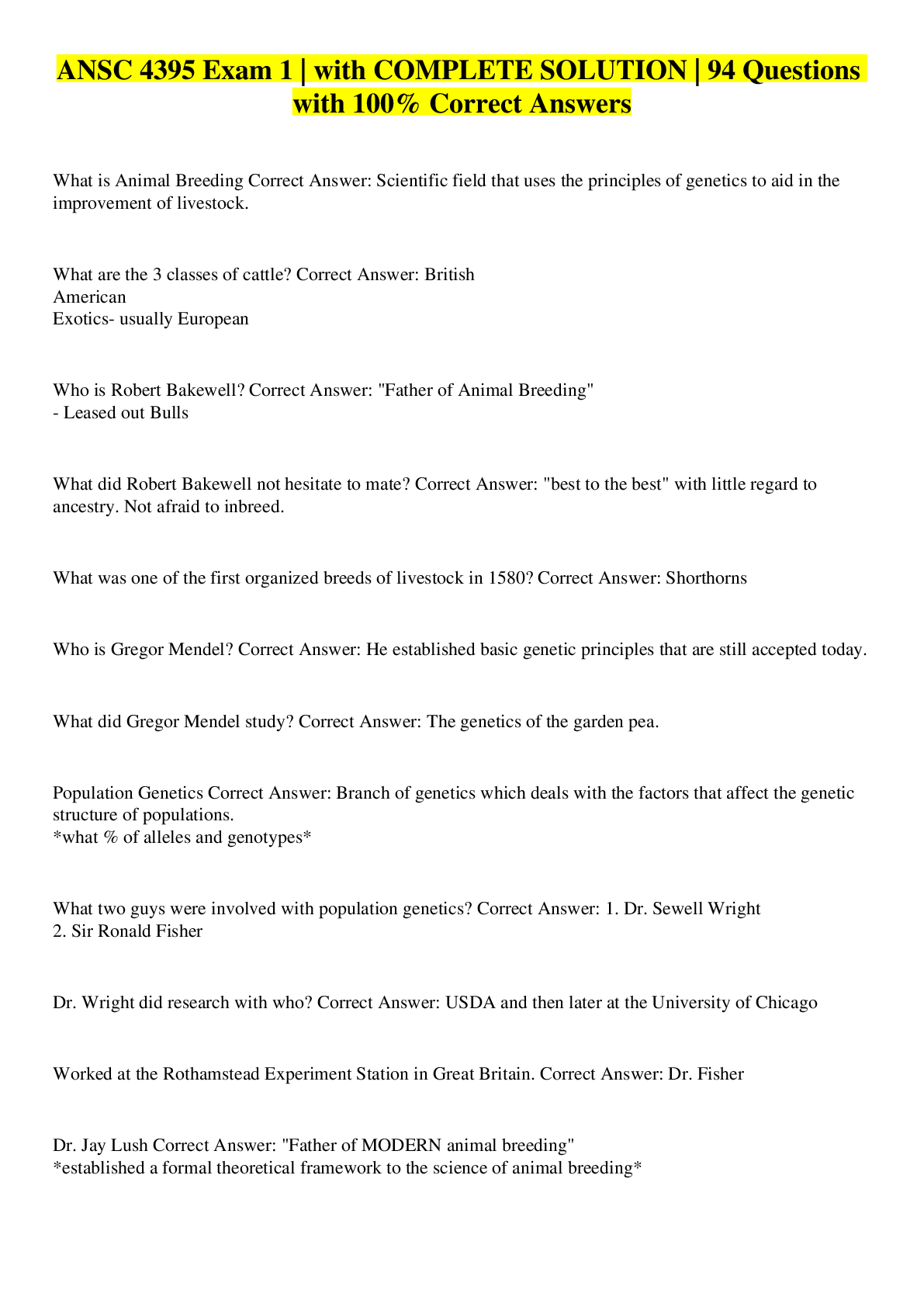

.png)


